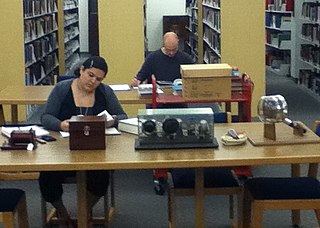 W
WThe Broadcasting Archives at the University of Maryland is home to several collections – the National Public Broadcasting Archives and the Library of American Broadcasting among them – housed together on the campus of the University of Maryland in College Park. Among the other holdings is the unusual Art Gliner Humor Collection, since humor plays such an important part in the history of radio and television programming.
 W
WThe Library of Congress (LC) is the research library that officially serves the United States Congress and is the de facto national library of the United States. It is the oldest federal cultural institution in the United States. The library is housed in three buildings on Capitol Hill in Washington, D.C.; it also maintains the National Audio-Visual Conservation Center in Culpeper, Virginia. The library's functions are overseen by the librarian of Congress, and its buildings are maintained by the architect of the Capitol. The Library of Congress is one of the largest libraries in the world. Its "collections are universal, not limited by subject, format, or national boundary, and include research materials from all parts of the world and in more than 450 languages."
 W
WDumbarton Oaks is a historic estate in the Georgetown neighborhood of Washington, D.C. It was the residence and garden of Robert Woods Bliss (1875–1962) and his wife Mildred Barnes Bliss (1879–1969).
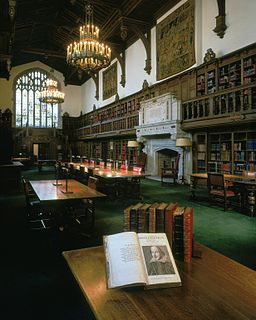 W
WThe Folger Shakespeare Library is an independent research library on Capitol Hill in Washington, D.C., in the United States. It has the world's largest collection of the printed works of William Shakespeare, and is a primary repository for rare materials from the early modern period (1500–1750). The library was established by Henry Clay Folger in association with his wife, Emily Jordan Folger. It opened in 1932, two years after his death.
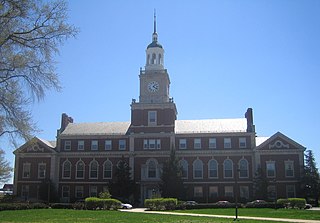 W
WThe Founders Library in Washington, D.C. is the main library at Howard University. The building, named The Founders Library in honor of the 17 men who founded Howard University, serves as the iconic symbol of the University. Designed by architect Albert Irvin Cassell, construction began in 1937 during the presidency of Mordecai Wyatt Johnson. As the second library built for the University, the cornerstone was laid on June 10, 1937, and the building was opened for service on January 3, 1939. Today, the library houses over 1 million volumes, the Channing Pollock Theater Collection, and is the home to the Moorland-Spingarn Research Center.
 W
WThe Franciscan Monastery of the Holy Land in America is a Franciscan complex at 14th and Quincy Streets in the Brookland neighborhood of Northeast Washington, D.C. Located on a hill called Mount Saint Sepulcher, and anchored by the Memorial Church of the Holy Sepulcher, it includes gardens, replicas of various shrines throughout Israel, a replica of the catacombs in Rome, an archive, a library, as well as bones of Saint Benignus of Armagh, brought from the Roman catacombs and originally in the cathedral of Narni, Italy.
 W
WThe Estelle and Melvin Gelman Library, more commonly known as Gelman Library, is the main library of The George Washington University, and is located on its Foggy Bottom campus. The Gelman Library, the Eckles Library on the Mount Vernon campus and the Virginia Science and Technology Campus Library in Ashburn comprise the trio known as the George Washington University Libraries. The Himmelfarb Health Sciences Library and the Jacob Burns Law Library also serve the university. The Gelman Library is a member of the Washington Research Library Consortium and the Association of Research Libraries.
 W
WThe Georgetown University Library is the library system of Georgetown University in Washington, D.C.. The library's holdings now contain approximately 3.5 million volumes housed in seven university buildings across 11 separate collections.
 W
WThe Joseph Mark Lauinger Library is the main library of Georgetown University and the center of the seven-library Georgetown library system that includes 3.5 million volumes. It holds 1.7 million volumes on six floors and has accommodations for individual and group study on all levels. It is generally referred to colloquially as "Lau" by Georgetown students.
 W
WThe Library of American Broadcasting (LAB) – a Washington, D.C. institution since 1972 – began life as the Broadcast Pioneers Library in space donated by the National Association of Broadcasters. The collection was thought up by William S. Hedges, a retired NBC executive, who created the Broadcasting Pioneers History Project in 1964 and began collecting historical materials. The Library expanded rapidly for twenty years, but as space and funding became increasingly scarce, the Library's governing board decided to seek another setting for the collection. They chose the University of Maryland, and in October 1994, LAB moved to its new location.
 W
WThis is a list of the founding members of the Society of the Cincinnati.
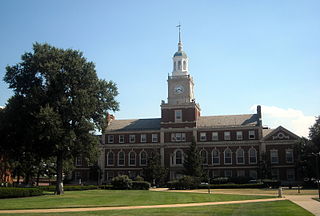 W
WThe Moorland–Spingarn Research Center (MSRC) in Washington D.C. is located on the campus of Howard University on the first and ground floors of Founders Library. The Moorland–Spingarn Research Center (MSRC) is recognized as one of the world's largest and most comprehensive repositories for the documentation of the history and culture of people of African descent in Africa, the Americas, and other parts of the world. As one of Howard University's major research facilities, the MSRC collects, preserves, organizes and makes available for research a wide range of resources chronicling the Black experience. Thus, it maintains a tradition of service which dates to the formative years of Howard University, when materials related to Africa and African Americans were first acquired.
 W
WThe National Archives Building, known informally as Archives I, is the headquarters of the National Archives and Records Administration. It is located north of the National Mall at 700 Pennsylvania Avenue, Northwest, Washington, D.C.. The Rotunda entrance is on Constitution Avenue, while the research entrance is on Pennsylvania Avenue. A second larger facility, known as "Archives II", is located in College Park, Maryland.
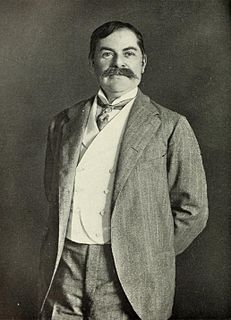 W
WThe National Library for the Blind was an American philanthropic and educational institution.
 W
WThe National Transportation Library (NTL) maintains and facilitates access to information necessary for transportation decision-making in government and coordinates with public and private transportation libraries and information providers to improve information sharing among the transportation community. It is currently under the administration of the Bureau of Transportation Statistics (BTS).
 W
WThe Navy Department Library is the official library of the United States Department of the Navy. Located at the Washington Navy Yard in Washington, D.C., it is part of the Naval History and Heritage Command.
 W
WRiggs Library was the main library of Georgetown University from 1891–1970, until being replaced by Lauinger Library. It is housed in the south tower of Healy Hall, on the third floor. Riggs Library is one of the few extant cast-iron libraries in the nation. The library still serves its original function of storing books despite its primary use as a formal event space. The library's construction was funded by E. Francis Riggs as a memorial to his father and brother, and was supervised by architect Paul Pelz, who designed Healy Hall and the Library of Congress, although Riggs did not open until a full decade after Healy Hall opened for use.
 W
WThe Society of the Cincinnati is a hereditary society with branches in the United States and France, founded in 1783, to preserve the ideals and fellowship of officers of the Continental Army who served in the Revolutionary War. Now in its third century, the Society promotes the public interest in the Revolution through its library and museum collections, publications, and other activities. It is the oldest hereditary society in America. Although restricted to lineal male descendants, there is a partnership society called Daughters of the Cincinnati which permits all female descendants of Continental officers.
 W
WThe United States Geological Survey Library is a program within the United States Geological Survey, a scientific bureau within the Department of Interior of the United States government. The USGS operates as a fact-finding research organization with no regulatory responsibility.
 W
WThe United States Holocaust Memorial Museum (USHMM) is the United States' official memorial to the Holocaust. Adjacent to the National Mall in Washington, D.C., the USHMM provides for the documentation, study, and interpretation of Holocaust history. It is dedicated to helping leaders and citizens of the world confront hatred, prevent genocide, promote human dignity, and strengthen democracy.
 W
WThe White House Library is on the Ground Floor of the White House, the official home of the President of the United States. The room is approximately 27 by 23 feet and is in the northeast of the ground floor. The Library is used for teas and meetings hosted by the President and First Lady. During the 1950s reconstruction of the White House, old building lumber from the house was salvaged and re-made into wall paneling for this room. Several basement rooms in the White House are paneled with salvaged building materials from the pre-reconstructed White House.